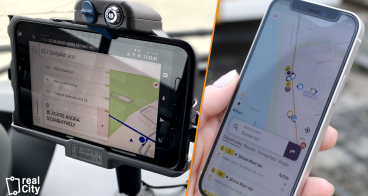Türkiye-Konya: Improvement of multi-modal commuting experience
Background
Challenge
How can Konya’s multimodal commuting experience be improved?
Context
In Konya, Türkiye, nearly 61% of the population lives in urban areas. Over the past decade, the number of registered vehicles in Konya has notably risen. As of October 2023, there were 849,055 registered vehicles, with private ones making up 48.2% of them. Private vehicles are used for about 24% of trips, while public transport accounts for 23%, 14% services, pedestrians, and cyclists together make up 39%. More than half of pedestrian trips are from home to school. Only a tiny portion of trips (1.86%) involve transfers between different modes of transportation. Specifically for public transport trips, the transfer rate is 7%. In 2002, transfer trips made up 3.73% of all trips, but by 2012, this had dropped to 1.84%.
Because the city has expended and people aren’t accustomed to changing from one mode of transport to another, more people are driving their own cars instead of using public transport. This has resulted in fewer trips where people use different forms of transport for a single journey. Multi-modal transportation should be encouraged in order to reduce the increasing use of private vehicles as a result of the horizontal development of Konya city over large areas and to support sustainable mobility.
The expected outcome
Multimodal transport should be promoted in order to reduce the use of private vehicles and to support sustainable mobility with personalised interventions using behavioural science and nudge techniques, and a transfer culture needs to be created in the city. It is aimed to ensure active mobility in last-mile journeys, increase the use of public transportation for long distances trips, and improve the integration between different transport modes. Therefore, the topic “Improvement of multi-modal commuting experience” was chosen as the RAPTOR challenge.
KPIs:
- With personalised interventions and incentives using behavioural science and nudging techniques, the tendency towards sustainable transportation modes will increase and the use of sustainable transportation modes will increase
- Satisfaction with multimodal transportation will increase by making transfers more attractive
- Active mobility, use of public transportation, road safety and accessibility will increase due to the reduction in the use of private vehicles, and public health will be protected by reducing air and noise pollution
- People’s awareness and culture of connected journeys will be created by training them on how to navigate multimodal transportation systems, how to transfer seamlessly between modes, and how to use various transportation options effectively
- Transfer between transportation modes will be provided by ensuring integration between active mobility and public transportation journeys
Published on 5 March.






